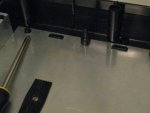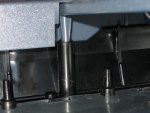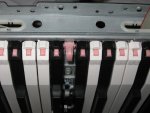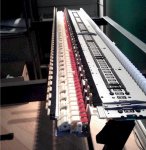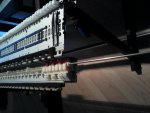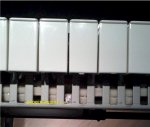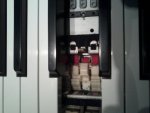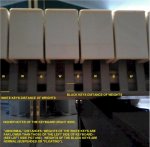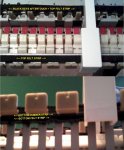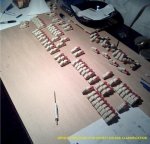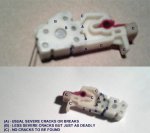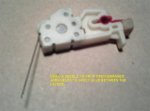Hi,
You can be sure that I will document everything I do ! I'll likely benefit from your excellent documentation you made also. This forum is about helping each other, right ? So I will certainly return the favour and post my findings and techniques.
I have read and read and read... a lot of forums and yep, the crackign weights problem comes up fairly often. Apparently one of the big problems with broken ones is that they are made of nylon and that material is a particular polymer base that cannot readily be glued and expected to last like new. Depending on where the crack or break is, it may not be salvageable at all. I have pondered a lot on what I'm going to do if I need to repair a busted weight. Since I've never actually seen one (except in photographs) and the space it occupies, its hard to think of what to do ahead of time. I'm looking into very thin & strong heat-shrinkable plastics technology, amongst other solutions. I also read that there are in fact some special glues that will bond nylon polymers together so maybe that and the shrink wrap may do the trick. The expensive route would be to take the part to someone who does nylon NC milling and have them just make new ones. Then again, there may be a market for this ...
The other problem I have to adress is that of the felt. I saw an excellent post somewhere (ratz, I didn't save the link) about replacing felt and apparently I need a particular grade of felt but have no clue as to what to get !
J
You can be sure that I will document everything I do ! I'll likely benefit from your excellent documentation you made also. This forum is about helping each other, right ? So I will certainly return the favour and post my findings and techniques.
I have read and read and read... a lot of forums and yep, the crackign weights problem comes up fairly often. Apparently one of the big problems with broken ones is that they are made of nylon and that material is a particular polymer base that cannot readily be glued and expected to last like new. Depending on where the crack or break is, it may not be salvageable at all. I have pondered a lot on what I'm going to do if I need to repair a busted weight. Since I've never actually seen one (except in photographs) and the space it occupies, its hard to think of what to do ahead of time. I'm looking into very thin & strong heat-shrinkable plastics technology, amongst other solutions. I also read that there are in fact some special glues that will bond nylon polymers together so maybe that and the shrink wrap may do the trick. The expensive route would be to take the part to someone who does nylon NC milling and have them just make new ones. Then again, there may be a market for this ...
The other problem I have to adress is that of the felt. I saw an excellent post somewhere (ratz, I didn't save the link) about replacing felt and apparently I need a particular grade of felt but have no clue as to what to get !
J


